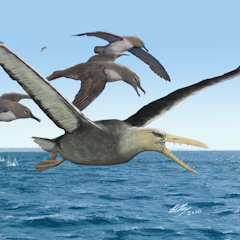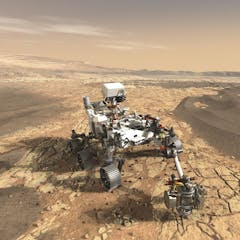
Articles on Asteroids
Displaying 61 - 80 of 168 articles

You might think lots of meteorites ultimately come from comets. Turns out, you’d be wrong, according to a new study that tracked meteors hurtling through the sky to find out where they came from.

A minuscule particle of asteroid dust has helped reveal how celestial rocks like Earth might have sprouted life.

There’s a good reason why so many scientists disagree with claims that Earth has been visited by aliens.

A recent study shows that the Earth’s water could come directly from the oxygen and hydrogen present in the rocks that formed it, and not from a late supply by asteroids.

A poor start for meteor showers in 2021 but things get better with a possible spectacular surprise later in the year. Here’s your guide on when and where to look to catch nature’s fireworks.

If the building blocks of life were present at the time that Earth was born, this could mean life is common in the universe.

Scientists hope samples of asteroid Ryugu may reveal traces of the chemical ingredients that formed life on Earth.

Paleontologists have discovered fossil remains belonging to an enormous ‘toothed’ bird that lived for a period of about 60 million years after dinosaurs.

Bennu will tell us about our own origins as much as about the origin of asteroid Bennu.

OSIRIS-REx will touch down on asteroid Bennu, collect a sample of the dust and begin its journey back to Earth, where scientists will study it, hoping to learn secrets of the solar system’s origin.

Following on from the 2019 International Year of Indigenous Languages, 2020 has seen 5 asteroids given new names recognising the contribution of illustrious Aboriginal and Torres Strait Islander people.

A small asteroid will cross Earth’s orbit on November 2. Scientists aren’t sure if the two will collide – but even if they do, there’s still no cause for alarm.

Martian meteorites allow scientists here on Earth to decode that planet’s geology, more than a decade before the first missions are scheduled to bring rocks back home from Mars.

It is a pretty spectacular achievement to not only rendezvous with an asteroid as it is whizzing around the Sun but also collect a sample. Here’s what the researchers learned.

A mass extinction 66 million years ago killed the non-bird dinosaurs, but plants survived.

Earth currently has a second moon - but it won’t stay long.

The Yarrabubba asteroid landed 2.2 billion years ago. Around the same time, the icy Earth went through a big thaw.

From alien life to human spaceflight, 2020 may deliver some exciting news.

A big year ahead for some of the meteor showers this year. Here’s your 2020 guide on when and where to look to catch nature’s fireworks.

Many people are still upset that Pluto was demoted from being a planet. But definitions of various celestial objects are fairly fluid. So whether it is an asteroid or moon or planet is up for debate.





